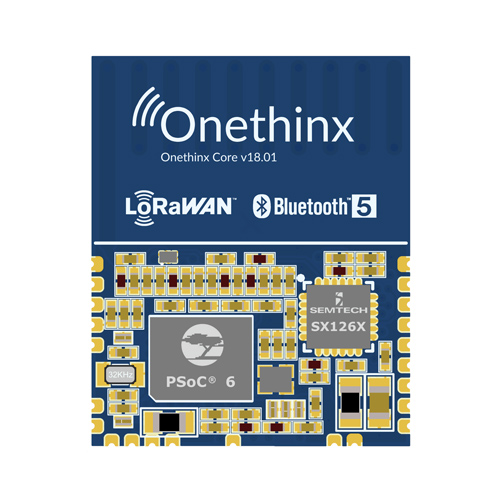I did the math 
I like you! You know how to math

We had the same problem. We were using Murata modules, but we had problems with it. That is why we have developed our own module. There is another thread about it:
https://www.eevblog.com/forum/projects/easiest-and-most-secure-lorawan-module/msg2300700/#msg2300700As jeremy said, it is easy to look at a chip and say it is cheap in volume, but people do not look at the big picture (RAM, stack, security, secure element, antenna, antenna matching, certifications,....)
Right, but you still need a micro which is capable of running the semtech stack, which basically means ARM. Even the cheapest of cheap modules from china still seem to use an STM32 with a large helping of flash.
We are using a PSoC 6x micro, which is a dual core micro with embedded secure element which allows secure boot. It has a secure M0+ core with the locked down stack running on it and an M4 for the user to program. Altogether 288 kB of SRAM, from which You can use 256 kB for your M4 application. So you have a micro and a stack, running separetly and securely.
Or you can possibly implement your own stack for a random low cost micro, but then you have another certification problem, which is that most commercial providers (or at least the ones I know of) won't let you connect with stacks which are not certified by the LoRa alliance.
That is why we have our stack locked down on the M0+. Because you cannot alter it, you can use our LoRa Alligance certification by similarity (Pending). You do not even have to know how LoRaWAN works. You only use few functions to communicate between the cores on the IPC, functions like> LoRaWAN_Init(), LoRaWAN_Join(true), LoRaWAN_Send(txBuffer, bufferLength, true),....
In addition, CE and FCC pending.
Also the SX1278 is the chip nobody wants to put in a new product; it is 433MHz which means you can't sell in US/EU/AU (maybe you are only targeting the Chinese market which is 433, but that seems unlikely; also AS923 is coming). Semtech know this and the difference to the SX1272 is $1 even in several k volume. You also have to consider that the cheapest modules might be the cheapest because they would actually fail certification or might have poor temperature/frequency stability which is actually really important with this type of modulation and application domain.
We use SX1261 radio and we are preparing EU868 and US915 versions for full release (you can order samples/dev-kit on
https://www.onethinx.com/). We are planning to release an IN865 (Indian) version soon and AU923 in the future. Or you can get a stackless version of the module.
To conclude, doing everything yourself might be more expensive than you think (in small to medium volume). + Bluetooth if you need it
